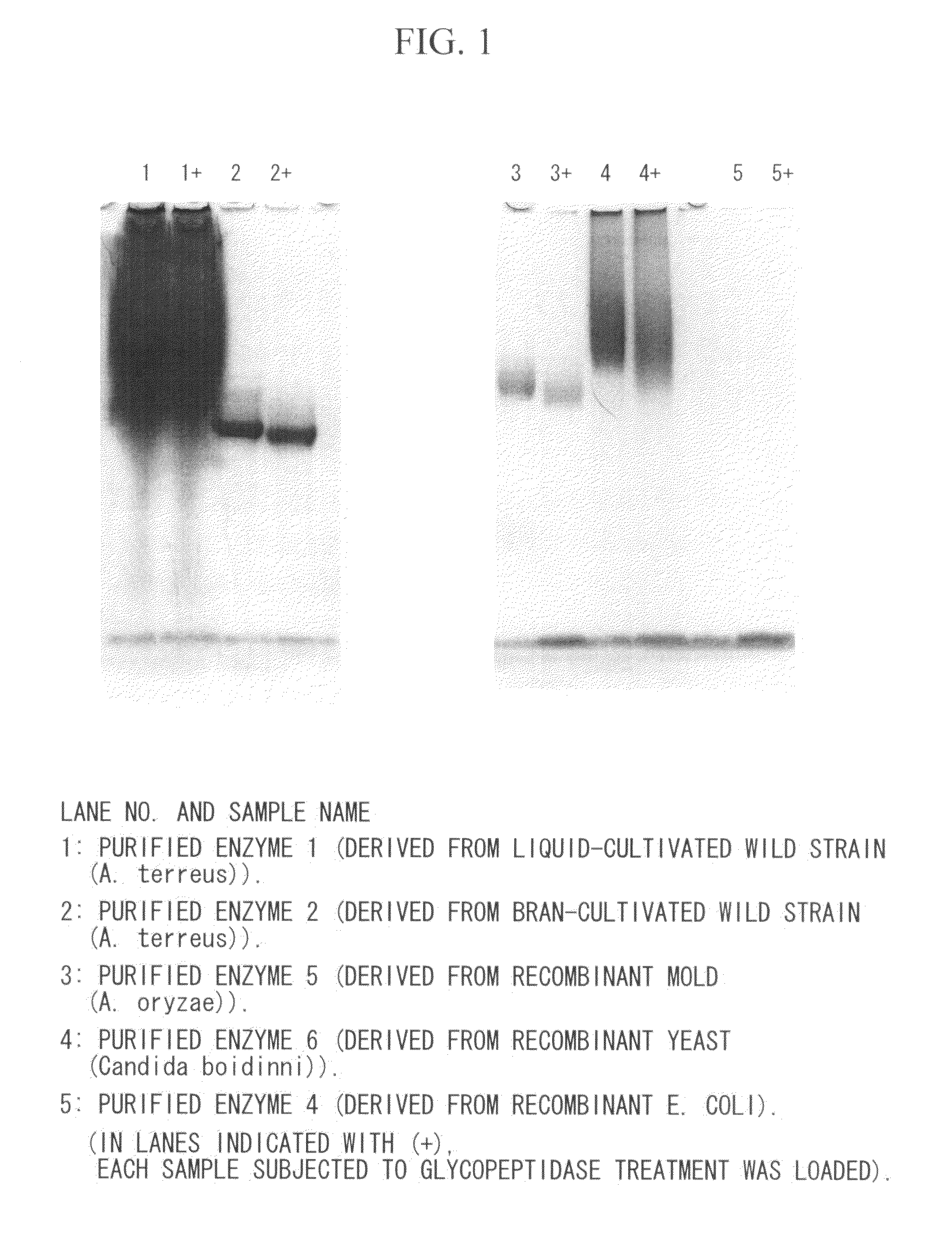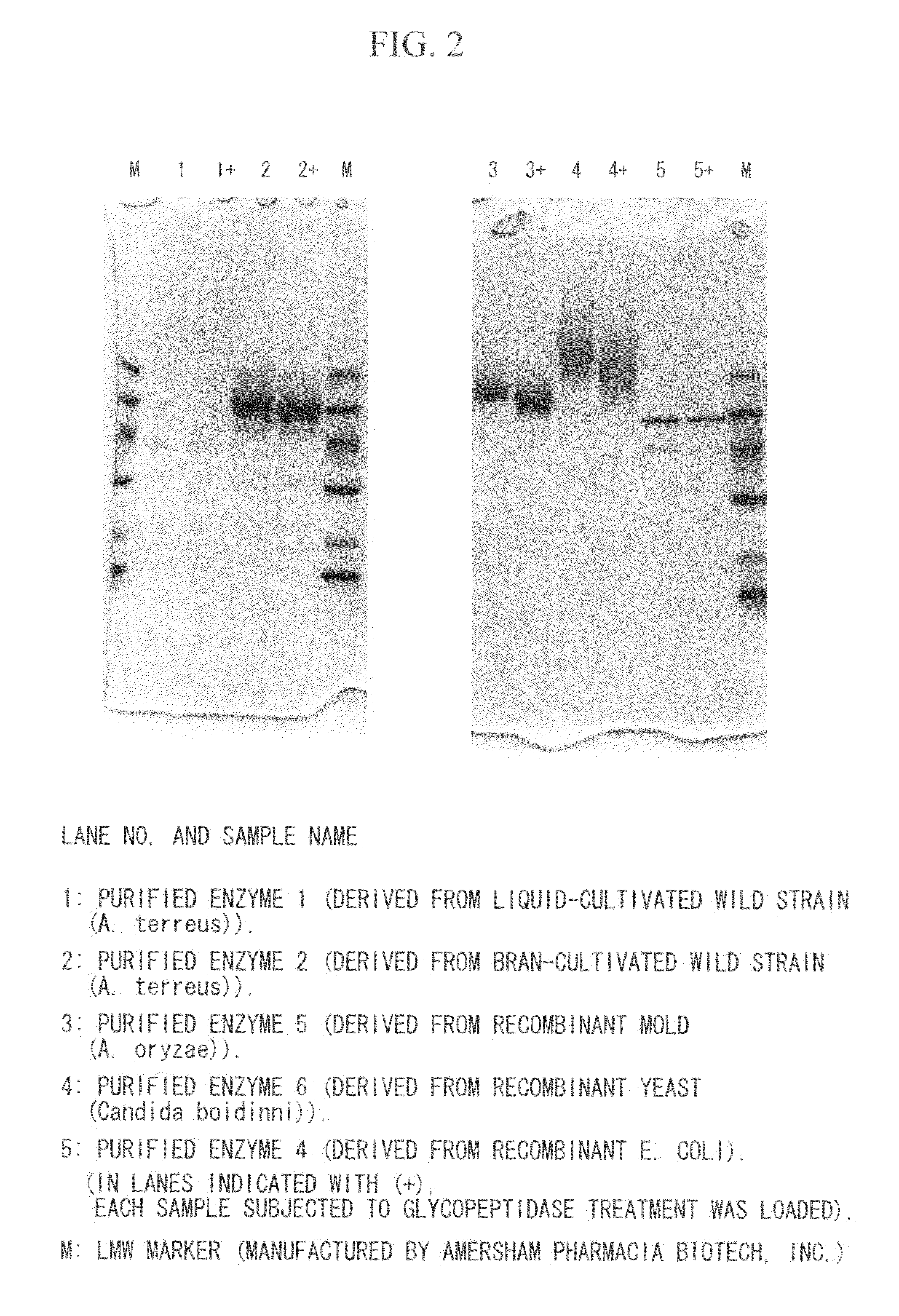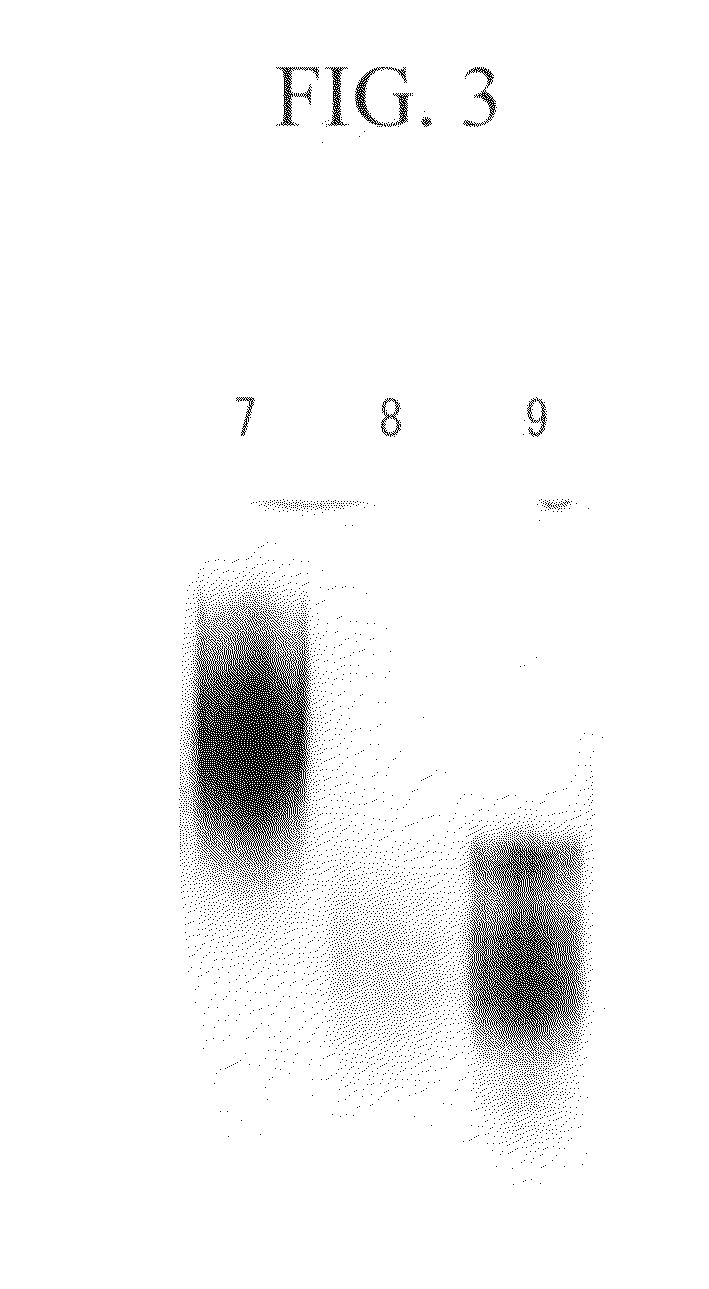Coenzyme-Linked Glucose Dehydrogenase and Polynucleotide Encoding the Same
a technology of coenzyme-linked glucose and glucose dehydrogenase, which is applied in the field of coenzyme-linked glucose dehydrogenase, can solve the problems of low stability of pqq-type glucose dehydrogenase, errors in measured values, etc., and achieves excellent substrate-recognizing ability against glucose, low activity, and modification
- Summary
- Abstract
- Description
- Claims
- Application Information
AI Technical Summary
Benefits of technology
Problems solved by technology
Method used
Image
Examples
example 1
1-1 (Seed Cultivation)
[0177]A pH of a liquid culture medium composed of 1% (W / V) glucose (manufactured by Wako Pure Chemical Industries, Ltd.), 2% (W / V) defatted soybean (manufactured by Nihon Syokuhan Co., Ltd.), 0.5% (W / V) corn steep liquor (manufactured by San-ei Sucrochemical Co., Ltd.), 0.1% (W / V) magnesium sulfate heptahydrate (manufactured by Nacalai Tesque, Inc.) and water was adjusted to 6.0. 100 mL of the liquid culture medium was placed in a Sakaguchi flask of 500 ml capacity, and plugged with cotton, followed by performing autoclave treatment at 121° C. for 20 minutes. After the culture medium was cooled, a strain of Aspergillus terreus (FERM BP-08578) was inoculated thereto, followed by cultivating while shaking at 28° C. for 48 hours to obtain a seed culture liquid.
1-2 (Obtaining Crude Enzyme Liquid by Liquid Cultivation)
[0178]A pH of 4 L of a liquid culture medium composed of 1% (W / V) glucose (manufactured by Wako Pure Chemical Industries, Ltd.), 2% (W / V) defatted soy...
example 2
(Preparation of Vector Containing Insert DNA)
(1) Isolation of Whole RNA
[0189]2 g of wet fungus bodies cultivated by the method described in the above paragraph 1-1 (Seed culture) of Example 1 were frozen with liquid nitrogen, and then 1.5 mg of whole RNA thereof was extracted using EASY Prep RNA (manufactured by TAKARA BIO INC.).
(2) Preparation of cDNA Library
[0190]A cDNA library was prepared from the whole RNA by performing reverse transcription using a reverse transcriptase and oligo dT adaptor primer. As a regent, “3′-Full RACE Core Set” (manufactured by TAKARA BIO INC.) was used under conditions disclosed in the protocol of the operating manual thereof.
[0191]The GLD gene was amplified by PCR using the cDNA library as a template. As primers, plural oligonucleotides were synthesized based on the N-terminal and internal amino acid sequence of purified enzyme 2 free from embedding sugar, the amino acid sequence being determined by Edman's method, the purified ...
example 3
(Transformation of Host and Purification of Enzyme)
[0194]A host Escherichia coli bacterium JM109 strain was transformed with the recombinant vector (pCGLD) prepared in Example 2, and transformant was selected on LB agar medium containing ampicillin. Then, the transformant was seeded in LB liquid culture medium containing 50 μg / ml of ampicillin, and then cultivated while shaking at 37° C. When the OD600 of the cultivated liquid reached approximately 0.4 to 0.5, the cultivated liquid was cooled to 15° C., and then left still for 30 minutes, followed by adding 1 mM IPTG thereto, and then further cultivating while shaking at 15° C. for 24 hours. After the cultivation was ended, the fungus bodies were collected by centrifugation, and then suspended with 10 mM potassium phosphate buffer (pH 7.5). After the fungus bodies were sonicated using a sonicator, a cell-free extract was obtained by centrifugation. It was confirmed by SDS-PAGE and activity measurement that an enzyme with an anticipa...
PUM
 Login to View More
Login to View More Abstract
Description
Claims
Application Information
 Login to View More
Login to View More - R&D
- Intellectual Property
- Life Sciences
- Materials
- Tech Scout
- Unparalleled Data Quality
- Higher Quality Content
- 60% Fewer Hallucinations
Browse by: Latest US Patents, China's latest patents, Technical Efficacy Thesaurus, Application Domain, Technology Topic, Popular Technical Reports.
© 2025 PatSnap. All rights reserved.Legal|Privacy policy|Modern Slavery Act Transparency Statement|Sitemap|About US| Contact US: help@patsnap.com



